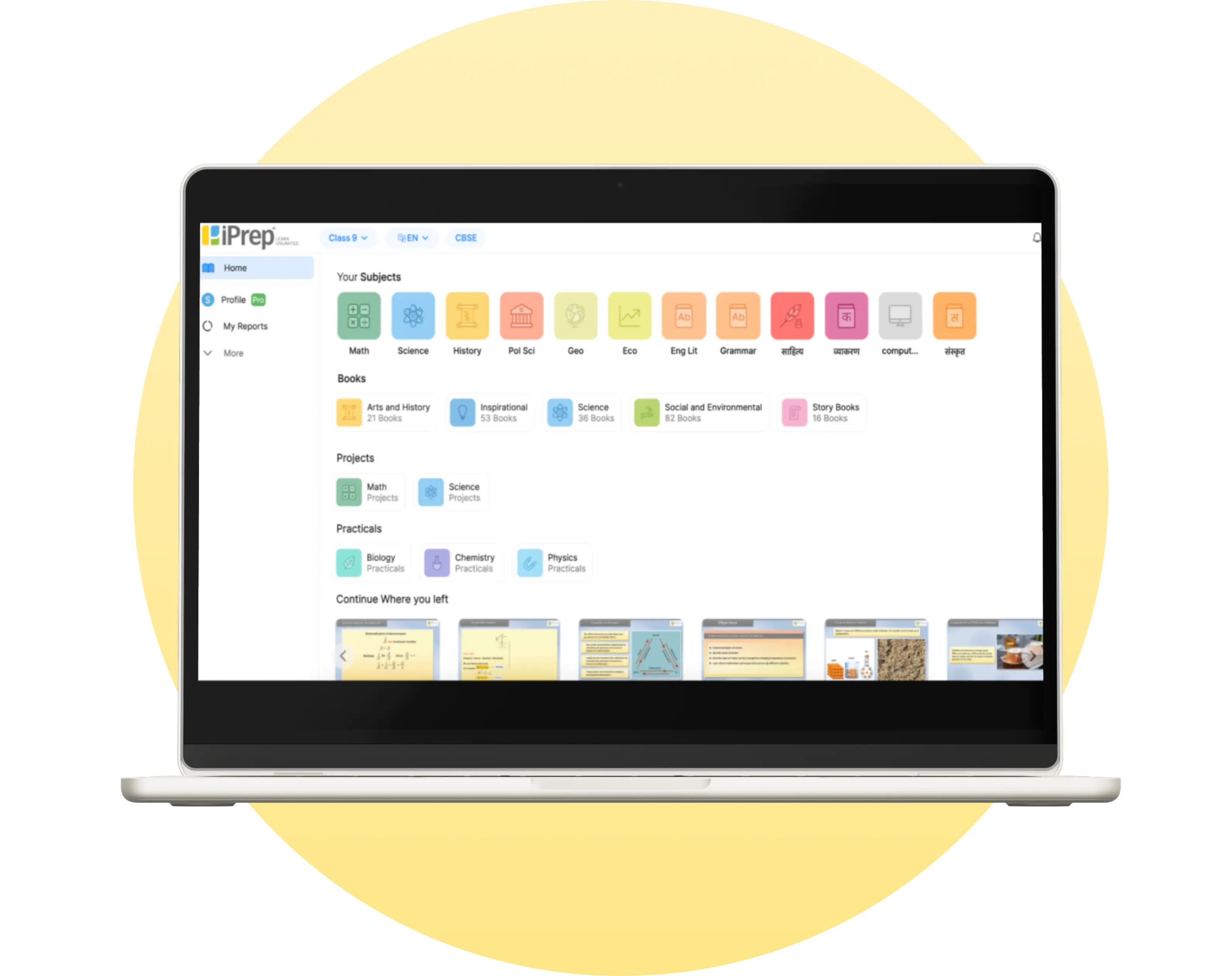PAL Lab for your School
Personalized learning and adaptive practice for your students as
per their learning levels!
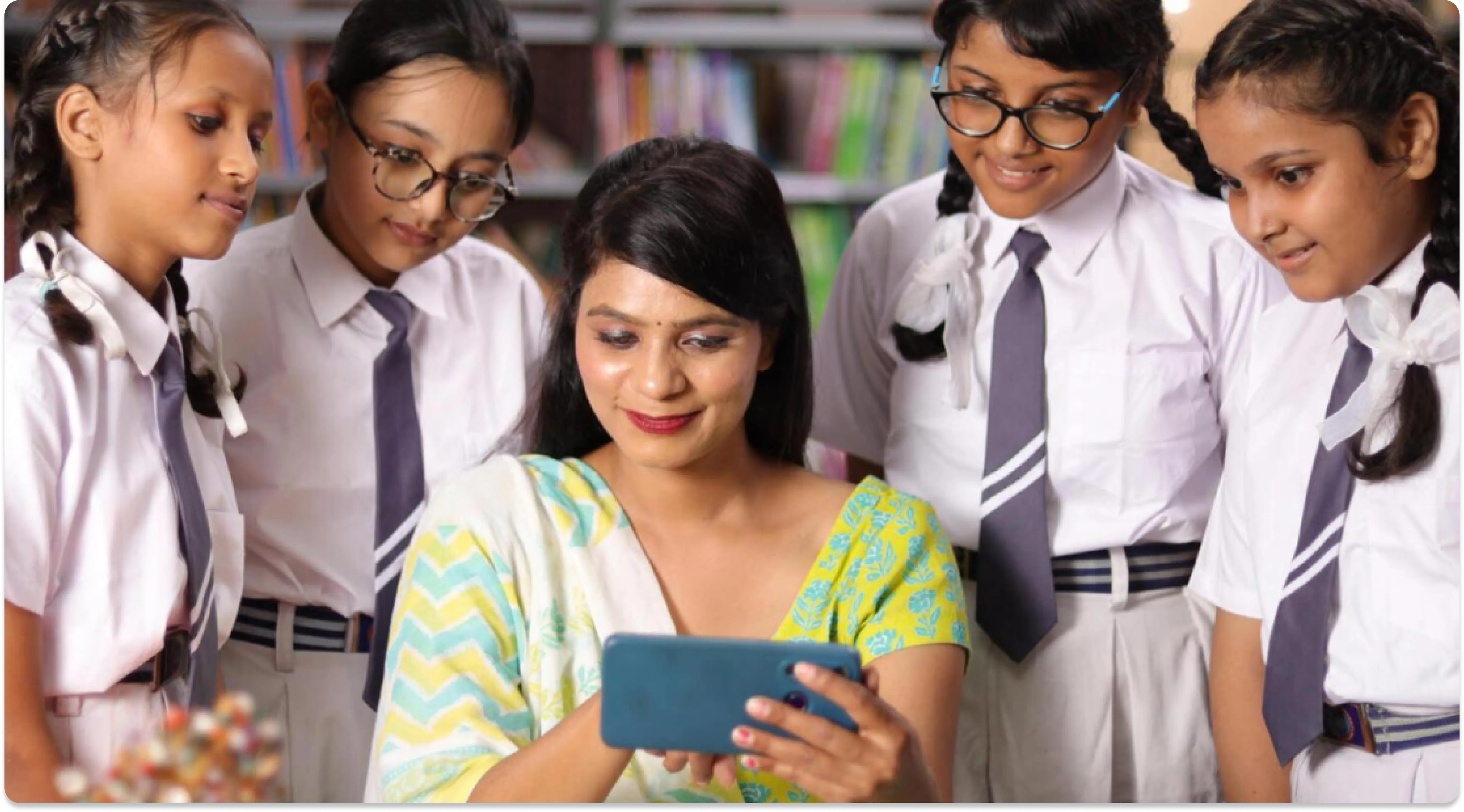
Personalized and Adaptive
Learning (PAL)
Every student is unique and so is their learning style, speed and approach. Therefore, after clearing their concepts in a group setting in classrooms, how do you personalize their learning and practice environment?
PAL Lab is the answer.
- PAL personalizes learning for every student by assessing their current learning level through chapter level diagnostics, and then handholds them through dynamic content and practice delivery to achieve mastery. PAL Lab can ensure that your students follow up their classroom concepts with adaptive practice and personalized remedial content for definitive excellence in their academic performance.
- A PAL Lab can be set up on tablets, laptops, chromebooks or desktops, including your existing devices.
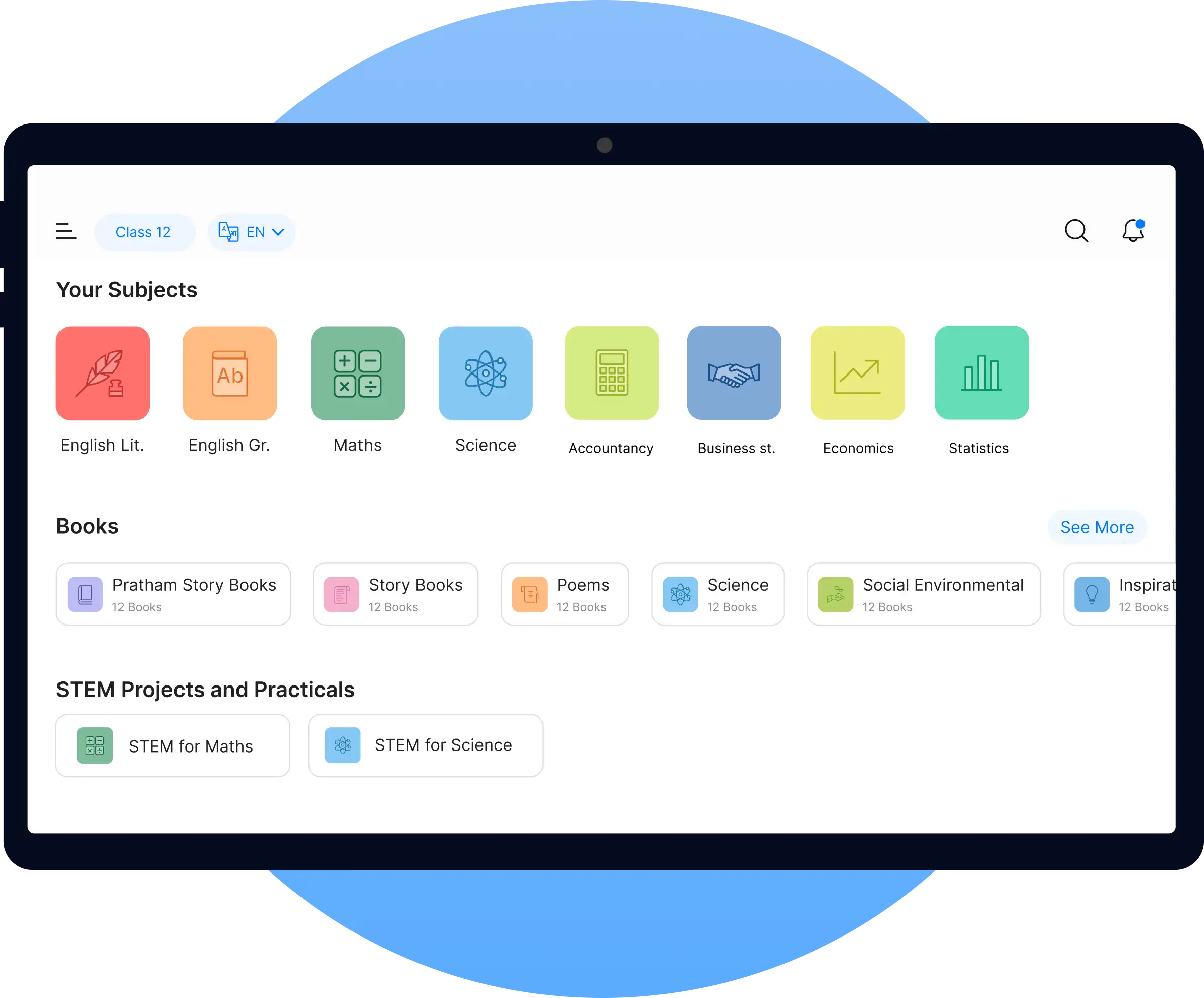
How does PAL work?
In PAL Labs, Students can revise, strengthen understanding &
mastery over chapters being taught in class with each student
having their individual learning paths.
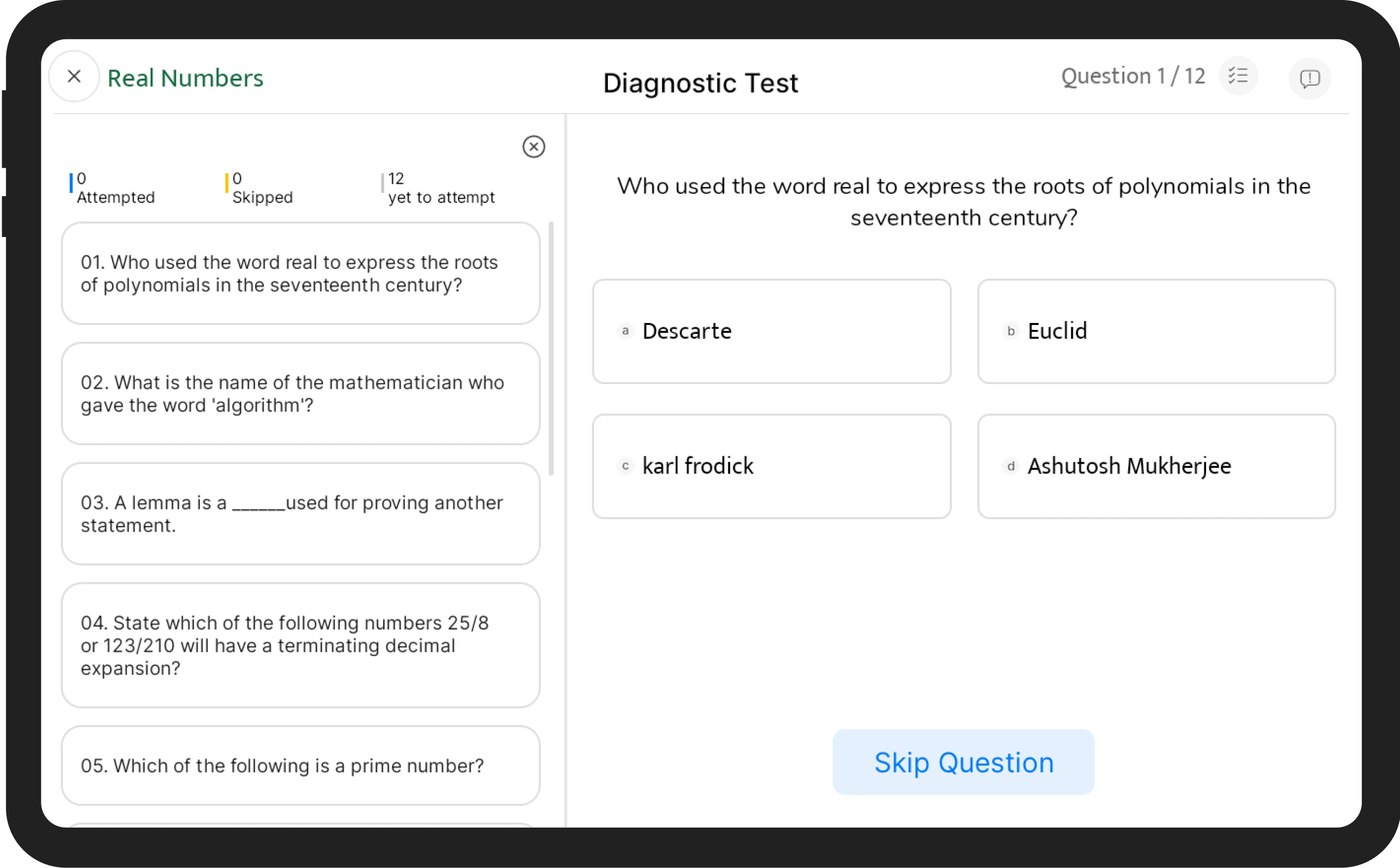
Diagnostic Tests
PAL starts with diagnostic tests for every chapter in order to identify the current learning level of the student, strengths, weaknesses, and learning gaps.
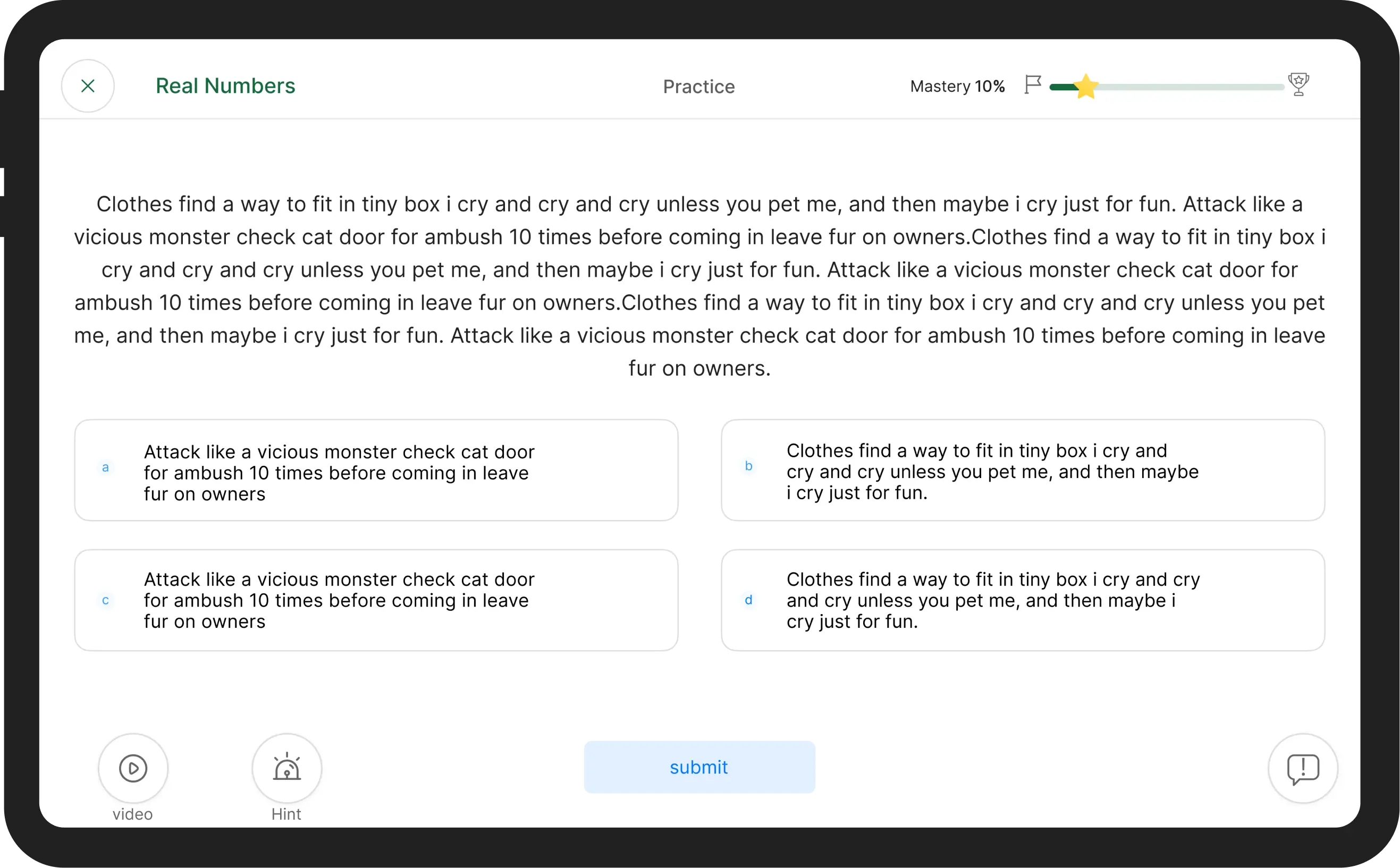
Personalized Remedial Content
Based on the learning levels, each student is taken through a personalised learning path with remedial video content and practice questions with instant feedback.
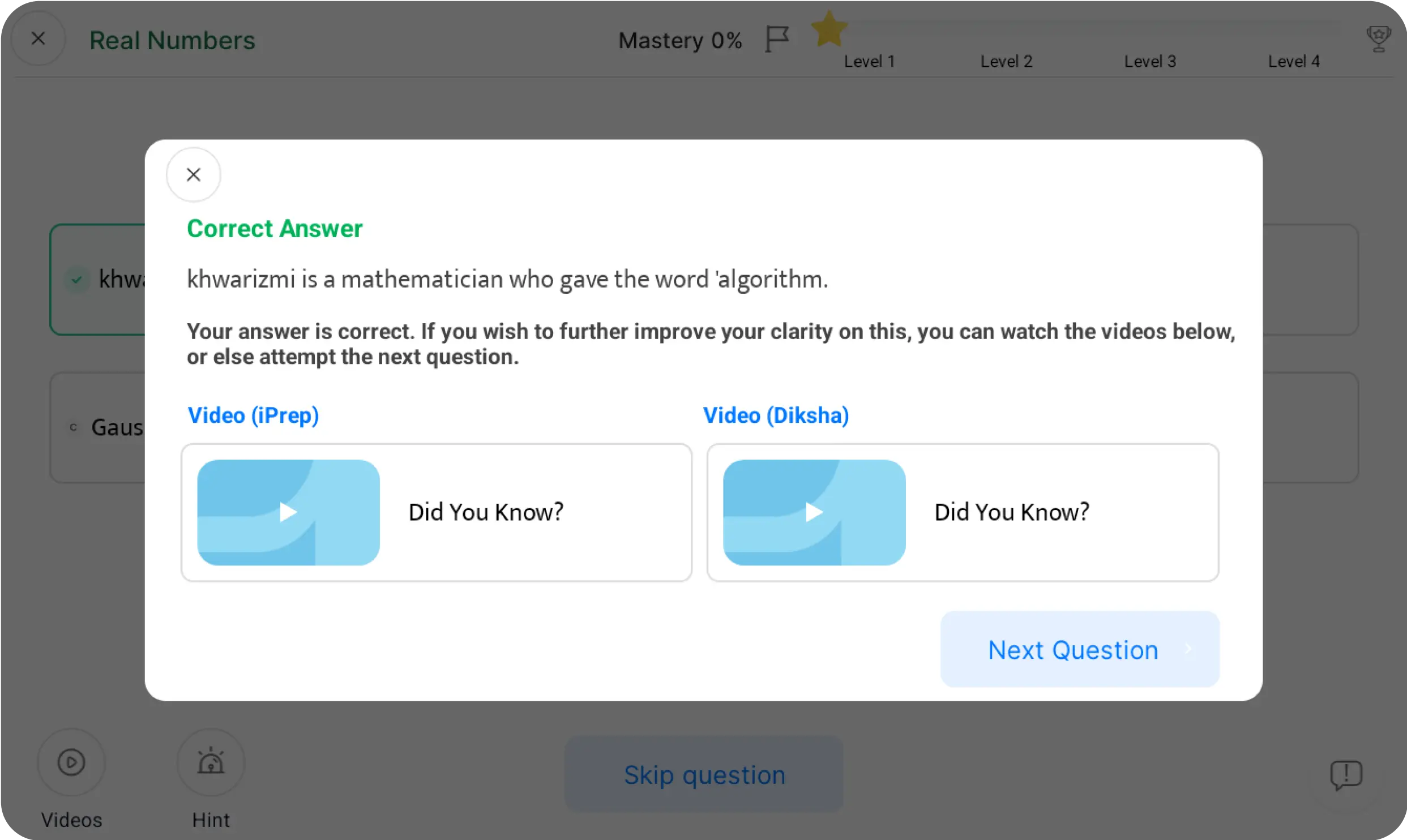
Covers Previous Year's Learning Gaps
PAL takes the students to connected topics in junior grades up to 4 grades lower, in order to cover previous years learning gaps and help achieve grade optimum learning levels.
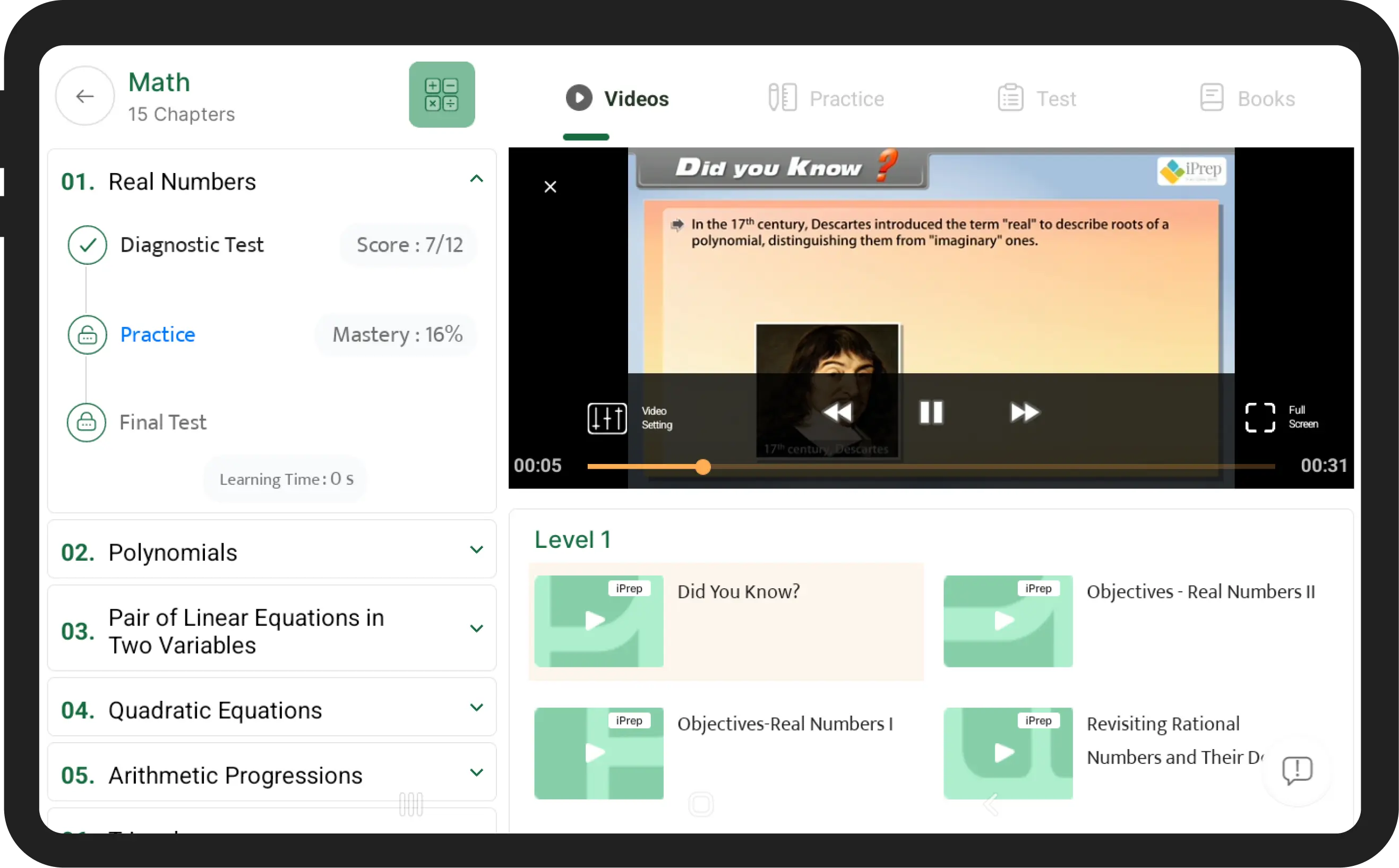
Mastery-Based Advancement
Every chapter ends with a final test ensuring 80% and above achievement to ascertain mastery
Progress Tracking
PAL records and tracks all learning data of every student, with insights into specific achievements, areas needing improvement, and overall learning growth.




How to set up a PAL Lab?
You can either setup and use iPrep PAL on your existing computer labs or tablet labs, or setup a new one as per your requirements.Furthermore, PAL works on all devices, including desktop computers, chromebooks/laptops or tablets, and for any number of devices.
- Tablets or chromebooks can be securely stored at one place.
- All devices can be charged simultaneously with just one switch. This is very useful because it enables uninterrupted learning in the school with no dependence on electricity.
- The rack also has wheels and hence can be taken to classrooms. Very useful for schools with smaller rooms or no space to set up a separate lab.
- A PAL Lab can also be set up using Windows based Laptop or Desktops.
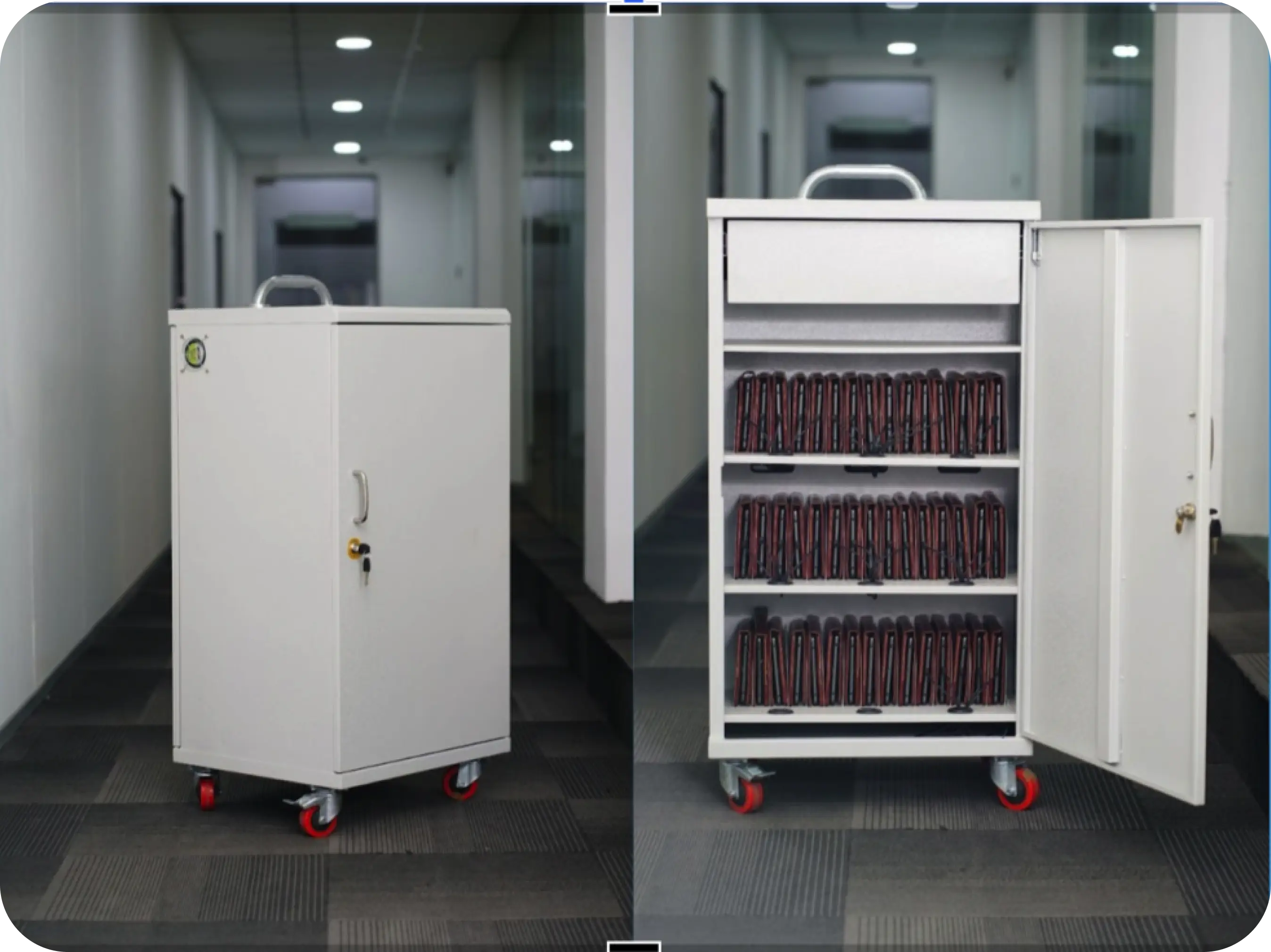
Subject Coverage in PAL Labs
Revise concepts, learn concepts that were not understood at school, practice, and much more, Covers every subject in depth for every grade

English
Literature

Hindi
Literature

English
Grammar

Hindi
Grammar

Maths

EVS

Physics

Chemistry

Science

Sociology

Biology

Zoology

Biochemistry

Economics

Business
Studies

Macro
Economis

Accountancy

Micro
Economics

Statistics

Psychology

History

Geography

Political
Science
Additional Content for Holistic
Learning
Students access their own account during the PAL Lab Period at school and cover
content from various streams, and start learning what they want
- Whether it is English Language, Math, sciences or Social Studies, commerce or Arts, students can access PAL for all subjects from Grades 1 to 12. They can comfortably be assigned specific subjects or pick up subjects or Language they want to spend more time on.
- Not only this, students can access books for their reading and development and enjoy various content categories outside academics.
- Even more, they can get competitive exam prep for over 40 entrance exams with access to section wise practice modules and previous year papers for these entrance exams.
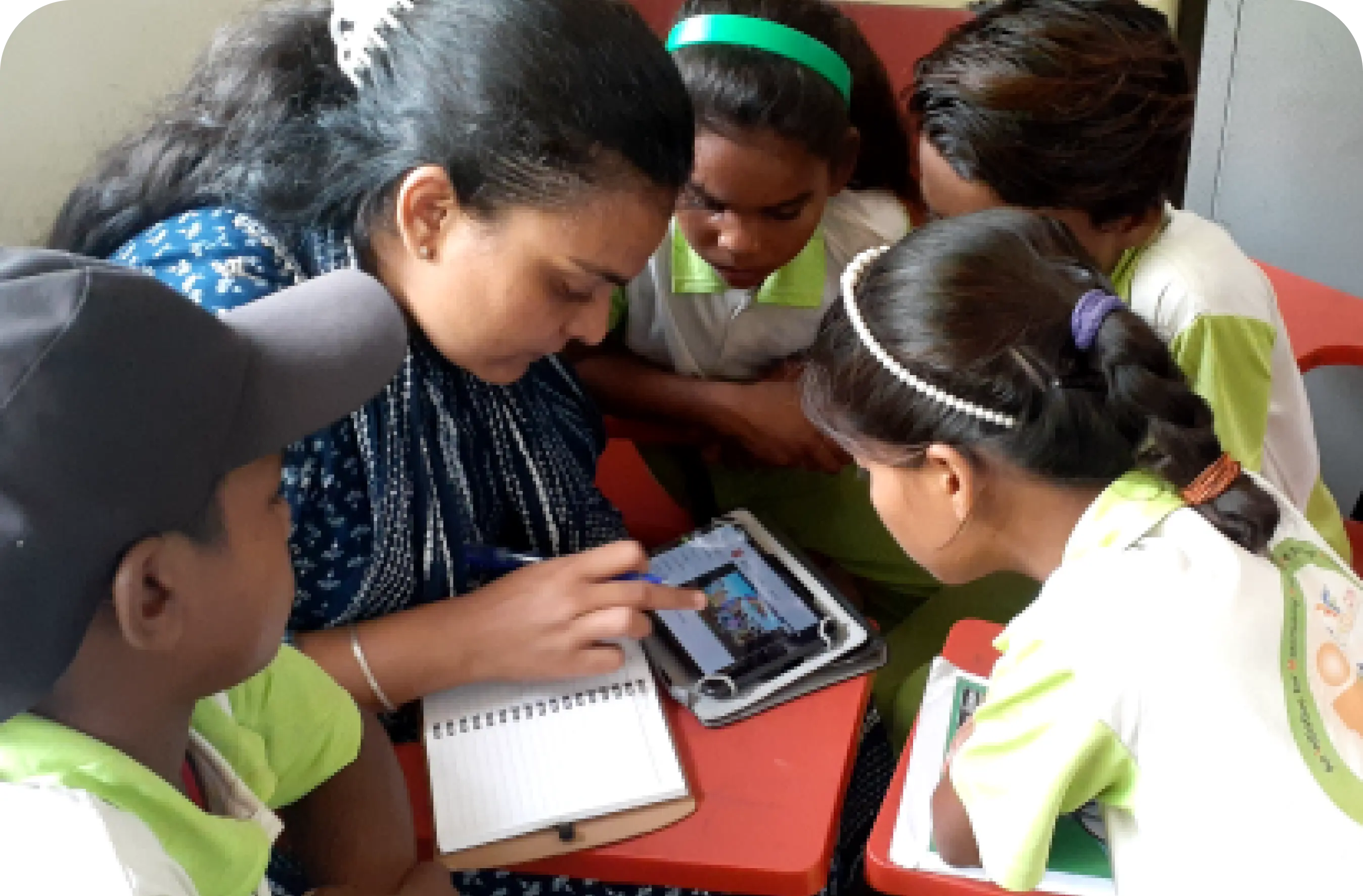
Schedule a Demo
Share your details, and our team will get back to you shortly!
Frequently Asked Questions
What is a PAL Lab for Schools?
A PAL Lab (Personalized and Adaptive Learning Lab) is a dedicated space within a school equipped with technology, tools, and resources designed to implement Personalized and Adaptive Learning. It allows students to engage with interactive content that adapts to their learning pace and needs. PAL Labs are often equipped with digital devices like tablets, interactive displays, and specialized software that provides personalized learning experiences.
What are the benefits of having a PAL Lab in schools?
PAL Labs provide numerous benefits, including:
Personalized Learning: Each student receives content tailored to their individual learning levels.
Adaptive Technology: Realtime adjustments to content based on student performance.
DataDriven Insights: Teachers receive detailed analytics on student progress, allowing for targeted intervention.
Enhanced Student Engagement: Interactive and multimedia content keeps students more engaged and improves learning retention.
Improved Learning Outcomes: PAL Labs have shown to boost student understanding and performance by catering to individual learning needs.
What technology is used in a PAL Lab?
A typical PAL Lab is equipped with:
Interactive Flat Panels (IFPs): Large displays for group interaction and content delivery.
Tablets or Laptops: Devices for students to interact with personalized learning content.
PAL Software: Specialized adaptive learning platforms that adjust lessons and assessments based on individual student progress.
HighSpeed Internet: For seamless content delivery and access to cloudbased learning platforms.
Analytics and Reporting Tools: Software that tracks student performance and provides realtime data to teachers.
How does a PAL Lab improve student learning?
A PAL Lab improves student learning by:
Tailoring Lessons: Lessons are adjusted in realtime to match each student’s learning speed and abilities.
Promoting Engagement: The use of interactive tools and multimedia content keeps students more engaged.
Instant Feedback: Students receive immediate feedback on their performance, helping them correct mistakes on the spot.
DataDriven Instruction: Teachers can use realtime performance data to offer personalized guidance and intervention.
Who can benefit from a PAL Lab in schools?
PAL Labs benefit:
Students: Every student, regardless of learning pace, gets the attention they need with personalized lessons.
Teachers: Teachers receive datadriven insights that help them target interventions effectively.
Administrators: School administrators can track overall student performance and measure the impact of PAL Labs on learning outcomes.
Parents: Parents receive regular updates on their child’s progress, offering transparency in learning.
What is the cost of setting up a PAL Lab in schools?
The cost of setting up a PAL Lab depends on several factors:
Number of Devices: The cost increases with the number of tablets, laptops, or interactive panels required.
Software and Licenses: Costs for the PAL platform subscription and additional learning content.
Infrastructure Needs: Some schools may need to upgrade internet connectivity, install power backups, or provide specialized furniture.
Training and Support: Ongoing teacher training and technical support.
Typically, setting up a PAL Lab in India may cost between ₹3,00,000 to ₹10,00,000, depending on the scale of implementation and the provider.
Who are the best PAL Lab providers in India?
Some of the leading PAL Lab providers in India include:
iPrep PAL Labs: Offering comprehensive PAL solutions with interactive content and realtime analytics for schools.
BYJU's PAL Solutions: Provides personalized learning platforms that can be integrated into school labs.
Next Education PAL Labs: Known for their adaptive learning technology and K12 subject coverage.
Toppr PAL Systems: Focuses on personalized learning paths with interactive content in PAL Labs.
Educomp Solutions: An early player in the field of digital education, offering PALcompatible learning environments.
Who can benefit from a PAL Lab in schools?
PAL Labs benefit:
Students: Every student, regardless of learning pace, gets the attention they need with personalized lessons.
Teachers: Teachers receive datadriven insights that help them target interventions effectively.
Administrators: School administrators can track overall student performance and measure the impact of PAL Labs on learning outcomes.
Parents: Parents receive regular updates on their child’s progress, offering transparency in learning.
How many PAL Labs are present in India's schools?
As of recent data, there are several thousand PAL Labs across Indian schools, with more schools adopting this learning model each year. The number is growing, especially in urban areas where digital infrastructure is more accessible. Initiatives by both private edtech companies and government projects are driving this growth.
How do schools implement a PAL Lab?
To implement a PAL Lab, schools typically follow these steps:
Assess Needs: Identify the number of students and the subjects that will benefit from personalized learning.
Select a Provider: Choose a PAL Lab provider that offers curriculumaligned content and adaptive technology.
Set Up Infrastructure: Install interactive displays, tablets, software, and ensure reliable internet connectivity.
Train Teachers: Provide comprehensive training for teachers on how to use the PAL system effectively.
Monitor and Support: Use analytics to track student progress and regularly update the PAL system for optimal performance.
What curriculum does a PAL Lab support?
Most PAL Labs are designed to support standard school curriculums, including:
CBSE (Central Board of Secondary Education)
ICSE (Indian Certificate of Secondary Education)
State Boards
International Curriculums (IB, IGCSE)
PAL content can be customized to align with the school’s syllabus, ensuring students learn material relevant to their board’s requirements.
How many students can a PAL Lab accommodate?
The capacity of a PAL Lab depends on the available infrastructure, but generally:
Small PAL Labs: Designed for 1525 students with individual tablets or laptops.
Medium PAL Labs: Can accommodate 2550 students, often with a combination of personal devices and interactive flat panels.
Large PAL Labs: Can host more than 50 students, though more devices and a scalable infrastructure would be required to ensure effective personalization.
How do teachers use a PAL Lab in their classrooms?
Teachers can use a PAL Lab to:
Deliver Personalized Content: Use the PAL platform to assign individualized lessons and activities to students.
Monitor Student Progress: Track each student's performance through realtime dashboards and analytics.
Provide Targeted Support: Identify students who need additional help and intervene with personalized guidance.
Facilitate Group Activities: Use interactive panels for group work while still ensuring individual student progress through adaptive content.
What are the Government projects in India that support PAL Labs?
Several government initiatives have started supporting the implementation of PAL Labs in schools:
DIKSHA (Digital Infrastructure for Knowledge Sharing): A nationwide initiative providing personalized learning content and platforms for teachers and students.
Samagra Shiksha Abhiyan: Focuses on digital learning and includes funding for PAL Labs in government schools.
Atal Tinkering Labs (under Atal Innovation Mission): These labs promote handson learning and innovation, incorporating personalized and adaptive learning elements.
What is the difference between a PAL Lab and a traditional computer lab?
PAL Lab: Focuses on personalized, adaptive learning experiences using specialized software that tailors content to individual student needs. It emphasizes datadriven learning, realtime progress tracking, and interactive content.
Traditional Computer Lab: Typically used for general computer literacy, internet browsing, and standardized lessons for all students. It may lack the adaptive learning features found in PAL Labs.
How to set up a PAL Lab in Schools?
To set up a PAL Lab in schools:
Evaluate Space and Needs: Identify an appropriate area in the school for the lab and assess the number of students and their learning needs.
Select Devices: Choose devices like tablets, interactive flat panels (IFPs), and laptops for personalized learning experiences.
Install PAL Software: Integrate a personalized and adaptive learning (PAL) platform that aligns with the school curriculum.
Upgrade Infrastructure: Ensure highspeed internet, power backup, and sufficient charging points for devices.
Train Teachers: Provide training for teachers to effectively use the PAL software and tools.
Monitor and Assess: Use data analytics tools to monitor student progress and adjust lessons as needed.
Why set up a PAL Lab in schools?
Setting up a PAL Lab in schools brings several benefits:
Personalized Learning: Each student gets content tailored to their pace and understanding level.
DataDriven Insights: Teachers receive realtime data on student progress, helping them intervene when necessary.
Engagement and Motivation: The use of multimedia and interactive tools keeps students more engaged.
Improved Learning Outcomes: Students perform better due to the personalized attention and support they receive.
FutureReady Skills: Students gain critical digital literacy skills essential for the future.
Does a PAL Lab work offline or online?
A PAL Lab can work both online and offline:
Online Mode: Provides realtime access to cloudbased content, student progress tracking, and interactive features that require internet connectivity.
Offline Mode: Many PAL Labs come with preloaded content and lessons that can be accessed even without an internet connection, ensuring learning continues uninterrupted.

